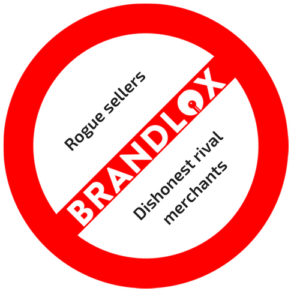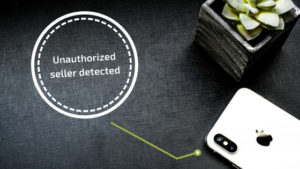 If you are the kind of e-commerce entrepreneur who believes that exclusivity and brand protection are keys to online retail success, you may be surprised to learn that Amazon does not share your philosophy.
If you are the kind of e-commerce entrepreneur who believes that exclusivity and brand protection are keys to online retail success, you may be surprised to learn that Amazon does not share your philosophy.
The world’s most dominant e-commerce platform believes that independent sellers should operate in a wide-open marketplace where other merchants should be allowed to freely sell your products with virtually no barriers to entry. Unfortunately, this business model has resulted in the proliferation of unauthorized Amazon sellers.
Amazon’s business model is flawed?
The problem with Amazon’s business model of perfect competition is that it can be detrimental to hands-on sellers who introduce new products to the third-party marketplace, and who want to control sales, marketing and distribution.
It is for this reason that many luxury brands have abstained from listing their products on Amazon, and the issue of unauthorized sellers and unethical dropshippers has even made national headlines as merchants have complained of lost sales and brand dilution.
As an Amazon independent seller, there may come a time when you will want your products to be sold by anyone who builds an inventory or who becomes a distributor. However, you will more than likely want to establish your brand first and later pursue distribution agreements.
Unauthorized sellers on Amazon will only get in your way if they alter your product listings, undercut your prices, provide terrible customer service, scam shoppers, counterfeit your products, and ultimately damage your reputation.
Identifying Unauthorized Sellers
The types of unauthorized sellers you may run into as you develop your Amazon e-commerce venture include:

- Newbie merchants who are testing the system and list your products by mistake.
- Casual sellers who previously purchased two or more of your products that they never used and wish to sell them as new.
- Rogue sellers who do not have your products but wish to scam shoppers by selling similar items.
- Dishonest rival merchants who somehow acquired an inventory of your products and want to dump them at low prices and dilute your brand.
- Counterfeiters who blatantly sell knockoffs while copying your branding and intellectual property.
As a Brandlox subscriber, identifying unauthorized sellers is just a matter of getting an instant notification, which you can set up to receive on your smartphone.
Brandlox will actively monitor the Amazon Identification Numbers of your products and will let you know when another Amazon seller lists them. Naturally, you can also establish exceptions for sellers you have authorized to offer your products.
Using Brandlox to Remove Unauthorized Sellers
When you get a Brandlox ASIN notification, you will not immediately know the intention of the seller; this determination can be made upon contacting the merchant through Seller Central. A newbie seller will likely realize his or her mistake, apologize and stop listing your products.
Sellers whose inventory of your products is limited to one or two items will be protected by the right of first sale. You can contact them for the purpose of getting to know them and continue to monitor their sales in case they are building an inventory without your consent.
You can deal with rogue sellers and scam artists by letting Brandlox generate a cease-and-desist legal notice. If they do not comply, you should notify Amazon Seller Support and provide the digital trail kept by Brandlox as evidence.
In this case, Amazon may suspend the unauthorized sellers. Finally, counterfeiters can be trapped by setting up a test purchase managed by Brandlox; with the current zero tolerance policy against counterfeiters, Amazon will likely kick them out once your provide the Brandlox evidence.
Would you like to learn more about dealing with unauthorized sellers on Amazon? Contact a Brandlox representative today at (866) 848-6072.
